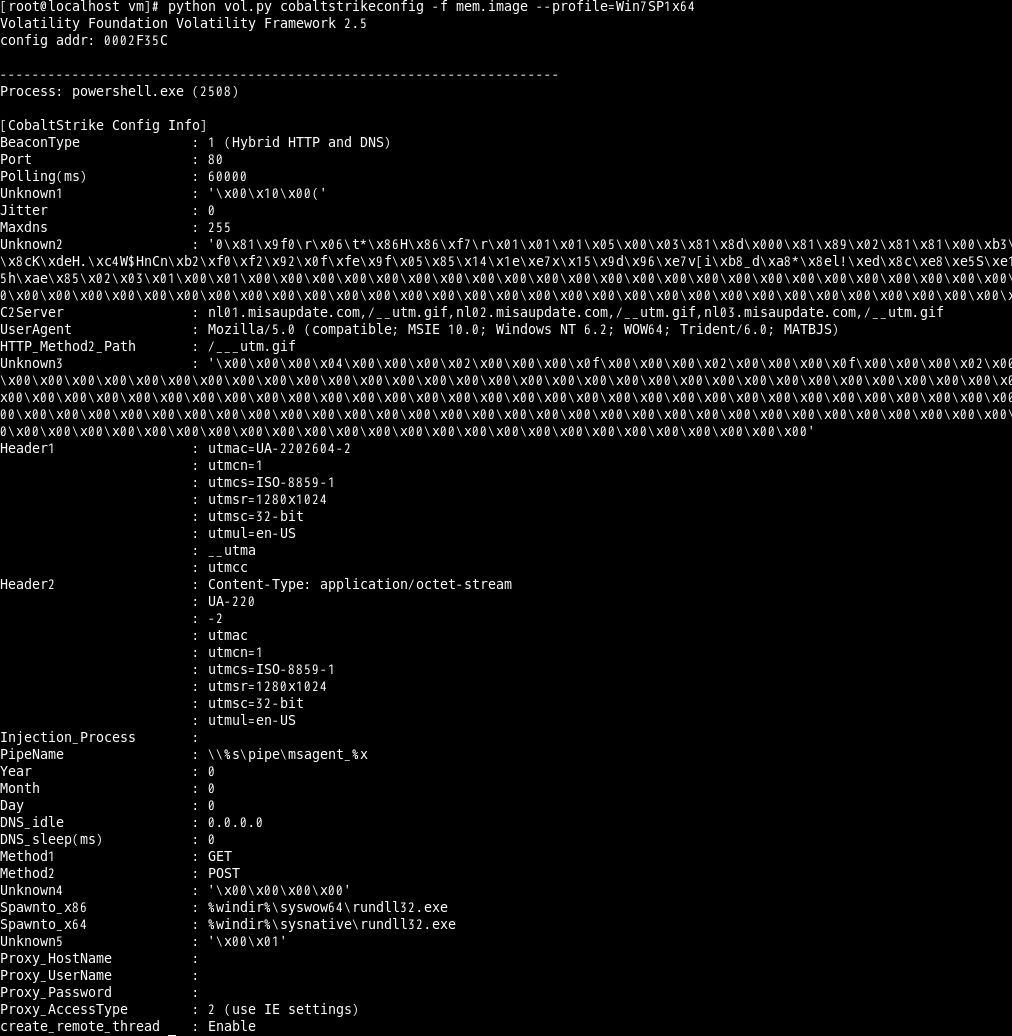

- #Ids find cobalt strike beacon how to#
- #Ids find cobalt strike beacon .dll#
- #Ids find cobalt strike beacon full#
- #Ids find cobalt strike beacon code#
The advantage of doing this is to easily transfer the session to another team server. 0x0501 listener APIĪgscriptThe information from the listener from the connected current team server will be collected. Monitor Listeners)Yes Cobalt StrikeTreat the core module of the information sent by the BOT. As you can see from the screenshot below, it took 148 packets containing DNS requests and responses to finish the task and send back the data to the Cobalt Strike Server. Once our option has been embedded, it is obfuscated with an XOR key of 0x2e, which helps to hide everything from the casual “strings” command.More security articles, please pay attention! 0x05 listener Cobalt Strike C2 domain: infosecppl.store We instructed the Beacon to execute the command systeminfo on the compromised host. If we were adding a Port option (which has an ID of 2) of the type Short and a value of 3133, this would be represented as: For example, if we have a data type of 3 and a value of Hello\x00, but the field permits 128 bytes, the length field would be set to 128.įinally, we have the actual value itself. An important caveat here is that the length field is set to how much total space is actually allocated for a value. At the time of writing, the data type IDs supported are:įollowing this is a LENGTH OF VALUE field, which specifies the allocated length in bytes of the option value, which follows the header.
#Ids find cobalt strike beacon .dll#
(CALLBACKOUTPUT, 'DLL Size d', sclen) BeaconPrintf(CALLBACKOUTPUT, 'Opening handle to process ID: d', procId) dllBuffer.
#Ids find cobalt strike beacon code#
Using this working sample code we can start to create an implementation using cobalt strikes beacon.
#Ids find cobalt strike beacon full#
Next the DATA TYPE ID field is assigned to the data type used for the options value. Full code for this project can be found here Cobalt Strike is a widely used C2. The ID field signifies the configuration option that this setting applies to, e.g., if the option refers to the user-agent string, the ID field would be 9. The header is made up of three (3) 16-bit values with the format:

So how is our configuration embedded within a beacon and how do we find it? The first thing we need to do is to scan our beacon for the signature \x2e\x2f\x2e\x2f\x2e\x2c, which is an XOR obfuscated version of the binary blob \x00\x01\x00\x01\x00\x02 (the significance of this blob will become apparent as we move through this post).Įach option added to the beacon configuration is encoded using a header and a data value. Somewhat ironically for us, this research has already been done by defenders such as SentinelOne’s CobaltStrikeParser project created by Gal Kristal, which looks to extract information from a binary beacon and displays details to defenders. Cobalt Strike Beacon Generationīefore we look at what we are doing to squeeze out every last bit of Cobalt Strike customization we can, we first need to understand how our options are embedded within a generated beacon. In this blog post, we will look at one method that has proved to be useful to achieving this level of customization by patching Cobalt Strike’s beacon payload on target. Unfortunately, this kind of technique isn’t supported out-of-the-box on frameworks like Cobalt Strike. That way, we can be sure that everything will work and look as benign as possible before we let our agent work its magic. One effective technique is offloading the configuration of our command and control (C2) profile to the target by analysing the execution environment and checking our potential connectivity before we ever kick off a beacon. Snort Search 1-45907 - MALWARE-CNC Cobalt Strike DNS beacon outbound TXT record 1-23066 - DELETED BLACKLIST DNS request for known malware domain. Here on the TrustedSec Adversary Emulation team, we’ve spent a lot of time coming up with ways to ensure that our first payload execution attempt has as much chance of succeeding as possible. But we can’t really afford to lose what could be our only avenue for gaining access to a target, right?
#Ids find cobalt strike beacon how to#
Phishing is getting harder and rightly so-as an industry, we’ve spent years sending campaign after campaign, openly publishing research on how to evade that new security product with that obscure fronting technique. OK, so maybe that’s a tad specific, but you get the point.
But it’s too late, a Slack message has been sent, warning everyone to be careful of opening suspicious emails… You can see from your DNS diagnostic callbacks that the beacon executed, so what gives? You quickly make a few changes to your payload and resend your phish. Then it’s time, you send in your email aaaaaand…nothing. We’ve all been there: you’ve completed your initial recon, sent in your emails to gather those leaked HTTP headers, spent an age configuring your malleable profile to be just right, set up your CDNs, and spun up your redirectors.


 0 kommentar(er)
0 kommentar(er)
